Indoor plants are more than just decorative accents — they’re living companions that bring calm, freshness, and a touch of nature into your home. But like all living things, houseplants need care beyond just watering and sunlight. One essential, often-overlooked part of plant maintenance is pruning — the art of cutting back leaves, stems, and sometimes even roots to encourage new growth and maintain plant health.
Many people fear pruning, thinking it might harm their beloved plants. In reality, occasional pruning is one of the best things you can do for your indoor plants. When done properly, it helps them grow stronger, look more beautiful, and stay disease-free. This detailed guide explains why pruning is necessary, when and how to do it, and what benefits it brings to your leafy friends.
1. What Is Pruning and Why It Matters
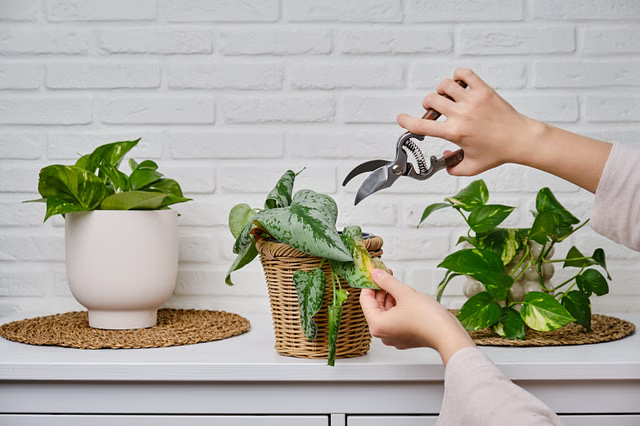
Pruning is the process of selectively trimming parts of a plant — such as dead leaves, stems, flowers, or overgrown branches — to improve its overall health and shape. For indoor plants, pruning mimics the natural wear-and-tear that would occur outdoors from wind, animals, and natural decay.
Without pruning, indoor plants can quickly become:
- Leggy and unbalanced,
- Overcrowded with dead or yellowing leaves,
- More vulnerable to pests and disease,
- Less likely to flower or produce new growth.
Pruning helps redirect a plant’s energy from maintaining old or unhealthy growth toward producing fresh leaves and blooms. It’s essentially giving your plant a “reset” — allowing it to rejuvenate and thrive in a confined indoor environment.
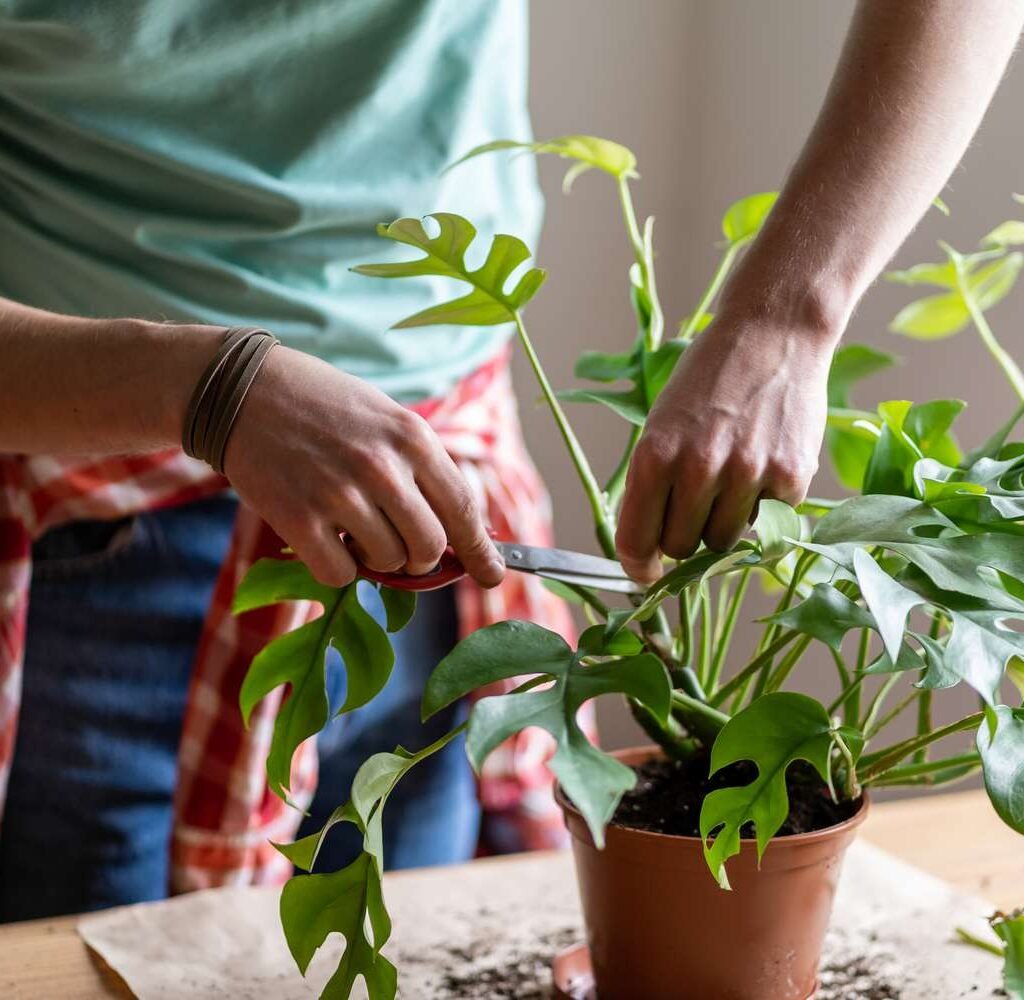
2. The Science Behind Pruning: How Plants Respond
When you prune a plant, you remove the apical dominance — the concentration of growth hormones (auxins) in the top part of the plant. This signals the plant to start growing new shoots from dormant buds along the stem, making it bushier and fuller.
At the same time, pruning improves air circulation and light penetration within the plant, preventing fungal problems and encouraging even photosynthesis. It’s like giving your plant a haircut and a breath of fresh air all at once.
3. Benefits of Pruning Indoor Plants
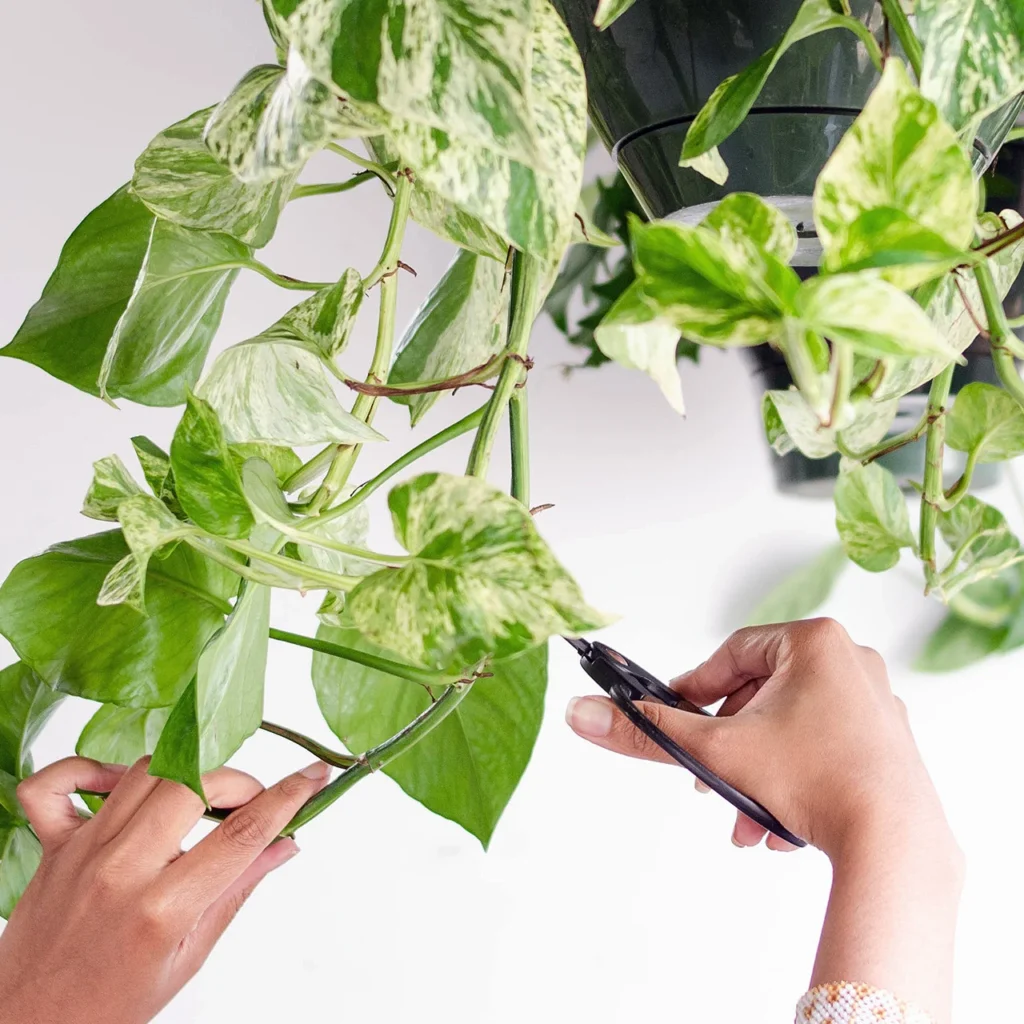
Let’s explore why occasional pruning is vital for every type of houseplant — from trailing vines to tall indoor trees.
A. Promotes Healthy Growth
Removing damaged, diseased, or dying leaves allows your plant to focus its resources on new, vigorous growth. Old foliage can sap energy and block sunlight from reaching younger leaves below.
B. Prevents Pest and Disease Problems
Dead leaves and stems often attract pests like aphids, mealybugs, or spider mites. These areas can also harbor fungal infections. Regular pruning removes potential hiding spots and keeps your plant clean and healthy.
C. Improves Shape and Appearance
Indoor plants can become leggy or uneven as they stretch toward light sources. Pruning helps maintain a balanced, symmetrical shape, making your plant look lush and attractive in your living space.
D. Encourages Flowering and Fruiting
For flowering houseplants like peace lilies or African violets, pruning spent blooms (called deadheading) encourages more flowers to form. The same applies to fruit-bearing indoor plants such as dwarf citrus or tomatoes.
E. Manages Size
Some plants grow rapidly and can outgrow their pots or available space. Occasional pruning controls their size, making them manageable and better suited to your indoor environment.
F. Revives Weak or Neglected Plants
If your plant looks dull, overgrown, or weak, strategic pruning can help rejuvenate it by stimulating new shoots and roots. It’s a great way to revive plants that seem “stuck” or dormant.
4. Knowing When to Prune Your Indoor Plants
Timing is everything when it comes to pruning. While you can remove dead or yellow leaves anytime, major pruning should follow the plant’s natural growth cycle.
- Best Time:
Prune during the active growing season, typically in spring and summer. Plants recover quickly and produce new growth faster. - Avoid Pruning In:
Late fall and winter, when most plants enter a resting or semi-dormant phase. Pruning during this time can stress them and delay recovery. - Exceptions:
If a plant is diseased or infested, prune immediately regardless of season to prevent spread.
5. What to Prune (and What Not to)
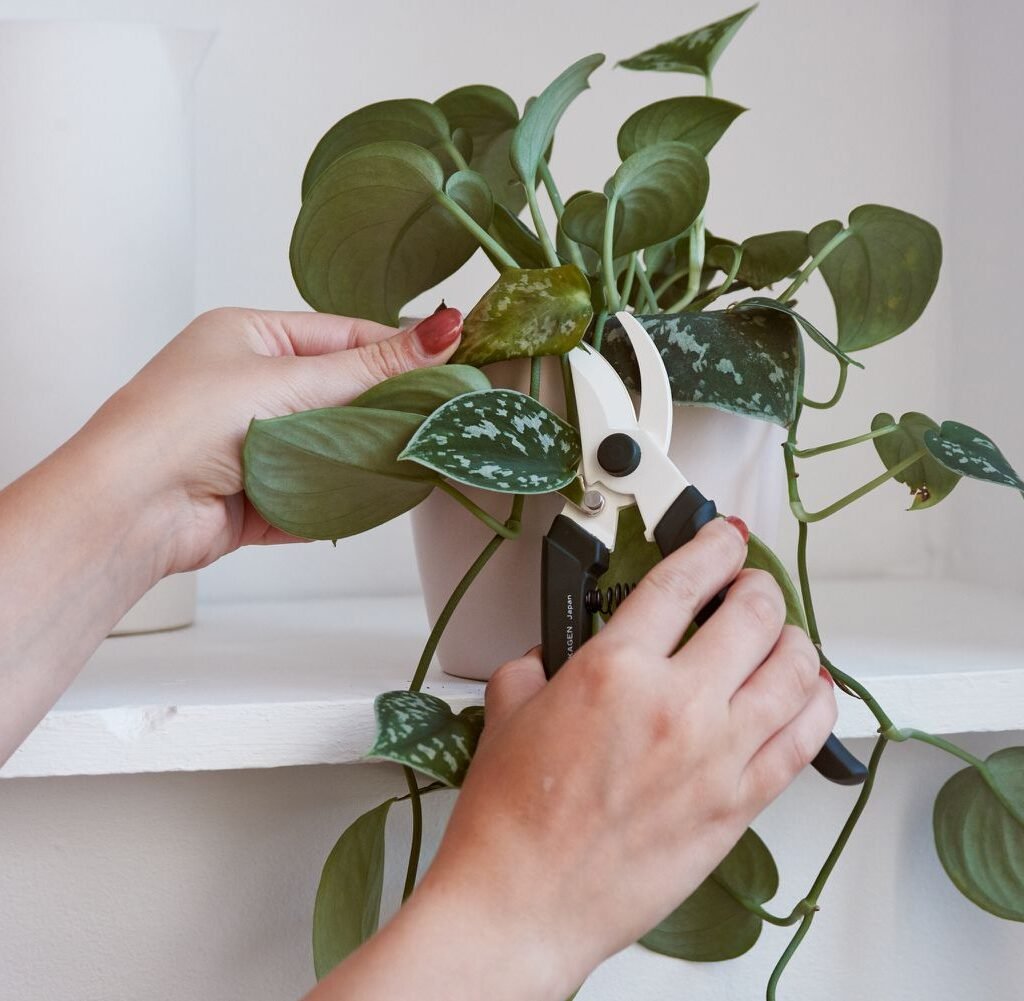
Understanding what parts to remove is crucial.
Prune:
- Yellow, brown, or dead leaves – they no longer contribute to photosynthesis.
- Leggy stems – to encourage branching and fuller growth.
- Spent flowers – to stimulate new blooms.
- Crossing or tangled stems – to improve airflow and prevent overcrowding.
- Damaged or diseased areas – to stop infections from spreading.
Avoid Pruning:
- New, tender growth – it may still be developing.
- Too much at once – never remove more than one-third of the plant’s foliage at a time.
- Healthy leaves at the base – they often help the plant store nutrients.
6. Tools You Need for Pruning
Using the right tools ensures clean cuts and prevents damage or infection.
- Pruning shears or scissors: Sharp, clean blades prevent crushing stems.
- Sterilizing alcohol or hydrogen peroxide: Disinfect blades before and after pruning to prevent disease transmission.
- Gloves: Protects your hands from sap or thorns.
- Clean cloth or paper towel: To wipe tools and leaves after pruning.
Pro Tip: Always sterilize your tools between plants — pests or fungi can easily transfer from one pot to another.
7. Step-by-Step Guide to Pruning Indoor Plants
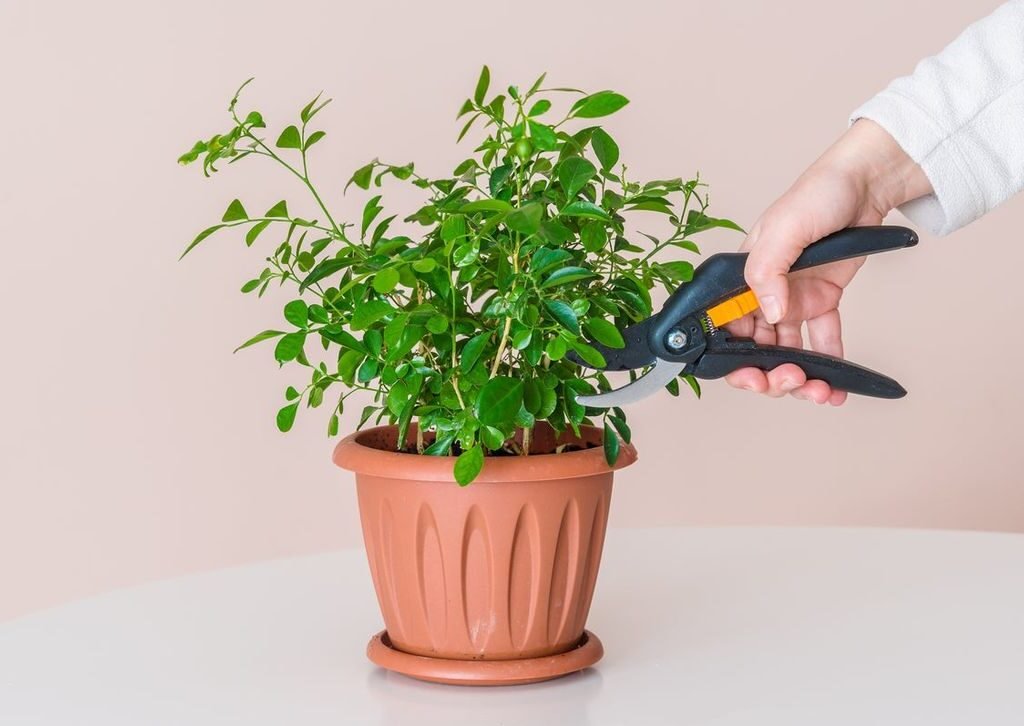
Step 1: Observe Your Plant
Take a few minutes to examine your plant from different angles. Identify dead, discolored, or overgrown sections that need trimming.
Step 2: Start Small
Begin by removing yellow or brown leaves and any visibly damaged stems. This alone often improves appearance and health dramatically.
Step 3: Shape the Plant
Trim long, leggy stems just above a node (where a leaf meets the stem). New shoots will emerge from this point, creating a fuller plant.
Step 4: Deadhead Flowers
Snip off faded or dried flowers near the base of the bloom. This encourages new buds and keeps the plant looking tidy.
Step 5: Clean Up
Remove fallen leaves or debris from the soil surface — they can attract pests or mold.
Step 6: Post-Pruning Care
After pruning, water the plant lightly and keep it out of direct sun for a few days to help it recover. You can also mist it occasionally to reduce stress.
8. How Often Should You Prune Indoor Plants?
There’s no strict schedule — it depends on the plant type and growth speed.
- Fast-growing plants (pothos, philodendrons, spider plants): Every 4–6 weeks during active growth.
- Slow-growing plants (succulents, snake plants, ZZ plants): Once or twice a year.
- Flowering plants: After each bloom cycle or when flowers fade.
Tip: Observe your plant’s natural growth pattern. If it looks untidy, top-heavy, or crowded, it’s time for a trim.
9. Common Pruning Mistakes to Avoid
Even with good intentions, beginners sometimes overdo pruning. Here’s what to watch out for:
- Over-pruning: Removing too much foliage at once shocks the plant and slows recovery.
- Dull or dirty tools: Can crush stems and introduce bacteria or fungi.
- Wrong cuts: Cutting too close to the main stem can damage the plant’s growing points.
- Ignoring plant type: Some plants, like ferns or palms, react poorly to heavy trimming.
- No aftercare: Forgetting to water or mist after pruning may stress your plant further.
To stay safe, prune gradually and monitor how your plant responds before proceeding further.
10. Special Notes for Different Plant Types
Vining Plants (Pothos, Philodendron, Ivy):
Cut just above a leaf node to encourage branching. You can propagate trimmed cuttings in water to create new plants.
Bushy Foliage Plants (Schefflera, Ficus, Rubber Plant):
Prune to maintain shape and remove lower leaves if you prefer a tree-like appearance.
Flowering Plants (Peace Lily, Anthurium, Begonia):
Deadhead regularly and trim yellow leaves to promote blooming.
Succulents and Cacti:
Minimal pruning is needed — only remove dead or rotting leaves.
Herbs (Basil, Mint, Rosemary):
Regular pinching encourages bushier growth and prevents flowering, which can make herbs taste bitter.
11. The Psychological and Aesthetic Value of Pruning
Beyond health benefits, pruning contributes to the aesthetic and emotional connection between you and your plants. Watching new shoots emerge from a freshly pruned plant brings a sense of accomplishment and joy.
Pruning also helps maintain the plant’s balance with your home décor — keeping it tidy, elegant, and harmonized with your interior space. It’s an act of mindfulness that strengthens your bond with nature.
12. Final Thoughts
Pruning might seem like a small task, but it has a profound impact on your indoor plant’s well-being. It’s the secret behind fuller foliage, better blooms, and a cleaner, healthier home garden.
By pruning occasionally, you’re not harming your plant — you’re helping it focus, renew, and flourish. Just like a haircut revitalizes you, a good trim refreshes your plant’s spirit.
So, take out those shears, observe your green companions, and start small. With a little patience and care, your indoor plants will reward you with fresh, vibrant growth — a living reminder that sometimes, growth begins with a gentle cut.
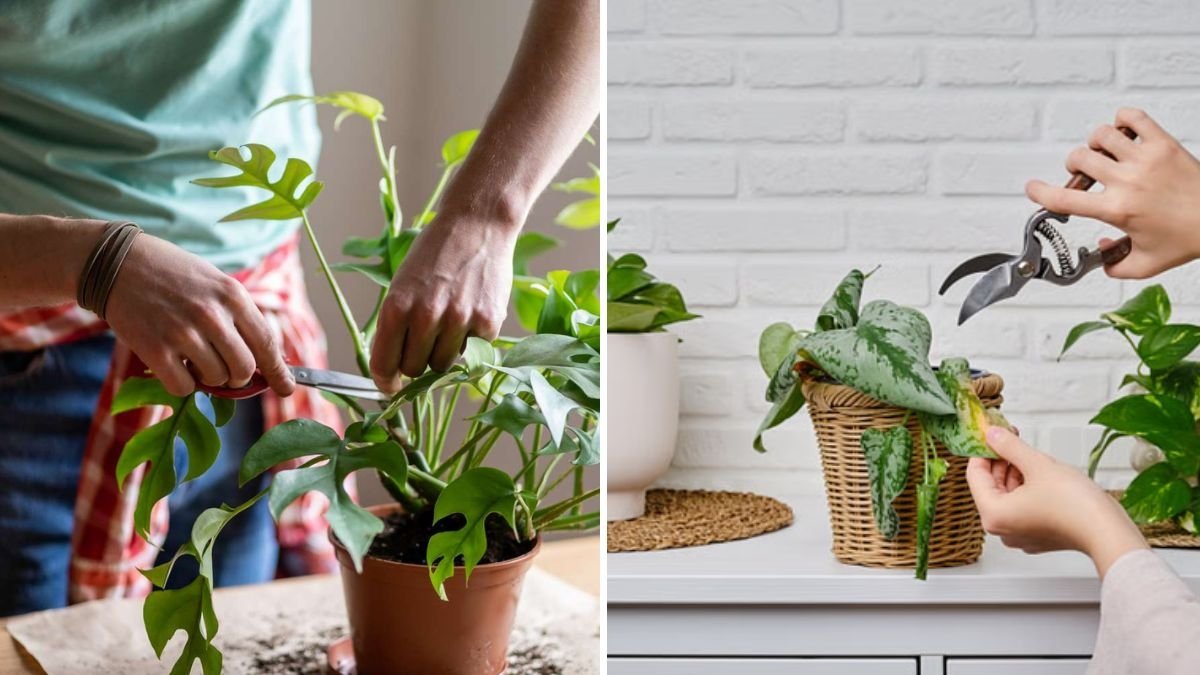




Leave A Comment